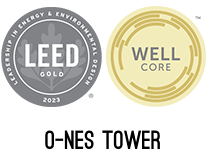
LEED FEATURES
O-NES TOWER is applying for LEED V4 C&S certification. LEED
(Leadership in Energy and Environmental Design) is the most
internationally recognized green building rating system established
by the U.S. Green Building Council which focuses on living
sustainably and also considers both health of people and
environment. The details of LEED requirements that are implemented
in O-NES TOWER are following.
Location and Transportation
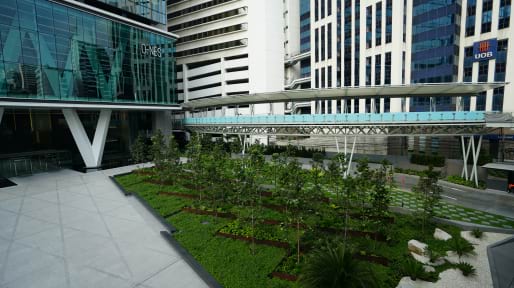
O-NES TOWER project is located on Sukhumvit road which considers A
previously developed area and within 400-m walking distance is
surrounded by more than 8 diverse basic services. The BTS station
(NANA Station) is located in front of the project, also, the bus
stops are available within 800-m from the project boundary. The
project provided 5% of the total parking spaces for carpools.
Sustainable Sites
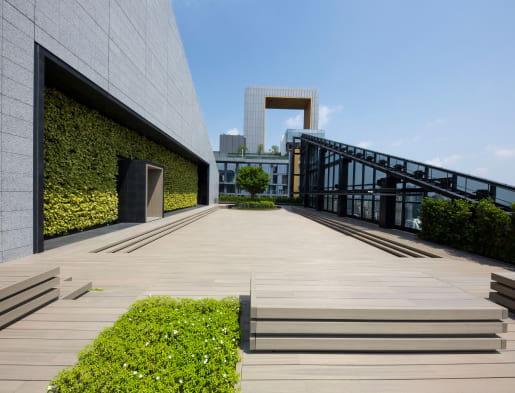
Construction activities for pollution prevention
During the construction period, the project created and implemented an erosion and sedimentation control plan to minimize soil, water, dust, and other pollution caused by construction activities.
Open space and green roof / Rainwater management
To help reduce the urban heat island effect, more than 30% of the site area is dedicated to outdoor space which 25% is vegetated and also light-color pavements are selected for the hardscape area.Light pollution reduction
Façade and landscape lighting are set automatically to turn off between midnight and 6 AM to reduce light pollution to the sky and surroundings.

Water Efficiency



Outdoor water use
The project is designed to use 100% recycled water for the landscape area, by capturing and treating the on-site rainwater, combination with the selection of plants species, and the installation of a high-efficiency drip irrigation system to help reduce the water consumption demand.
Indoor water use
The project considers reducing potable water for indoor water use throughout the alternative potable water system (recycled water) together with the selection of the water-saving typed fixtures, the project can reduce more than 50% of potable water use compared to general office standards.Cooling tower
At least 20% of make-up water is recycled water.Water metering
To monitor the water use during the building operation, the water meter is installed in water sub-system of the project (irrigation, indoor water fixture and fitting, reclaim water).
Energy and Atmosphere
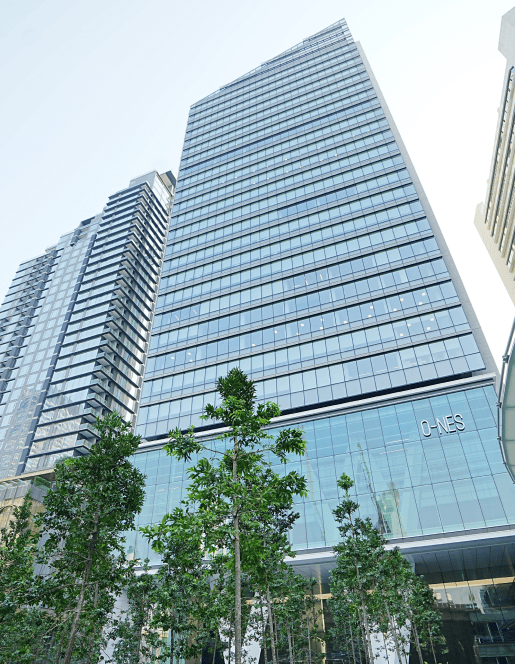
Optimized Energy Performance
To achieve more than 11% of energy reduction from LEED baseline, the project is designed with the high-efficiency Variable Refrigerant Flow (VRF) system together with the high-performance façade system, laminated insulated glass with Low-E coatings, and also the selection of LED for lighting system with automatic daylight and occupancy sensor control.Energy metering, monitoring, and commissioning
The commissioning agent is set to verify the design, construction, and eventual operation of a project that meets the owner's project requirements in terms of energy. Also, to continue the energy monitoring, energy meters are installed in sub-energy systems of the project and linked to the building automation system (BAS) to control and manage the building.Environmental refrigerant
No CFC is used in cooling refrigerants.
Materials and Resources

Waste and recycling management
More than 75% of the project's construction wastes are diverted through reuse and recycling strategies. For the operation period, recyclable and hazardous waste storage areas have been provided separately at the BOH area to support the reduction of the waste disposed in landfills.Recycled materials
More than 25%, by cost, of the total value of permanently installed building products in the project is containing recycled content.
Indoor Environmental Quality

Indoor Air Quality
Smoking and the use of e-cigarettes are prohibited within the
project boundary, except in the designated area. Signage on the
hazard of smoking will be placed in this area to discourage
smoking.
The vestibule was provided at the main building entrance to slow
the movement of air from outdoors to indoors. Also, at all
regularly used entrances, the 3-m walk-off mats will be placed and
scheduled for weekly cleaning.
The outdoor air ventilation rates of all occupied areas are
designed with 30% above ASHARE 62.1-2010 standard. The HEX is
equipped with pre- filter MERV8 and medium filter MERV14, which
can capture at least 75% of PM 2.5. All HVAC system is designed to
be single ventilation zone which helps reduce the chance of indoor
air contamination. Furthermore, the janitor areas are designed to
be negative pressure together with self-closing doors and
deck-to-deck partitions to prevent interior cross-contamination.
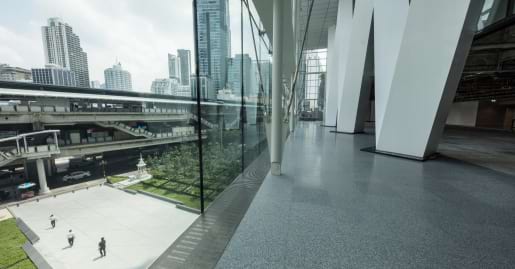
Low-Emitting Materials
To ensure good indoor air quality, the project selected low-emitting materials for all interior areas (including interior wet applied product, floor, and built-in furniture) to reduce the volatile organic compounds (VOCs) that off-gas from paints, finishes, and other coatings.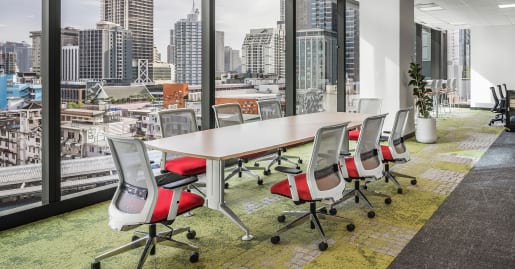
Quality views
The project is designed to provide more than 75% of regularly occupied space with sufficient quality views which allow building occupants to connect with the outdoor natural environment.


Make an appointment to visit the project
Contact :
MS. YODSAVADEE SAGIAMWATTANAKARN
(ยศาวดี เสงี่ยมวัฒนาการ)
Tel :
02-2525200 EXT.630
